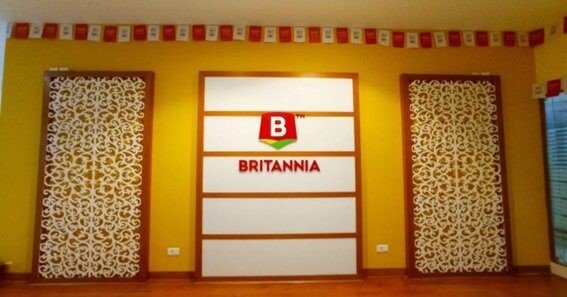Britannia Industries is one of India’s leading food companies, famous for its biscuits, dairy products, and bread. Established over a century ago, Britannia has transformed itself into a household name with a vast product portfolio. But what makes the Britannia business model so successful? In this article, we explore Britannia’s key business strategies, from revenue generation to product diversification, and how these elements have driven the company’s sustained growth.
Britannia Business Model: A Comprehensive Overview
The Britannia business model revolves around a strong foundation of product quality, strategic pricing, and an extensive distribution network. As a fast-moving consumer goods (FMCG) company, Britannia’s business model is centered on catering to the mass market while maintaining a focus on innovation and premium product offerings. Let’s dive into the core components of this model.
1. Britannia Industries Business Strategy
Britannia’s success can be attributed to a well-planned business strategy that combines market penetration, premiumization, and continuous innovation. The company caters to various consumer segments by offering products across price points—from affordable mass-market biscuits to premium, health-conscious offerings. This broad appeal enables Britannia to reach diverse demographics and increase its market share.
2. Britannia Revenue Model
The Britannia revenue model is built around multiple product lines, including biscuits, bread, cakes, and dairy products. The biscuit segment, which includes iconic brands like Good Day, Marie Gold, and Bourbon, remains the largest contributor to the company’s revenues. By introducing new variants and catering to health-conscious consumers, Britannia has continued to drive strong growth across all segments. Additionally, the company has diversified into other areas like dairy and bakery products to expand its revenue streams.
3. Britannia Product Diversification
Britannia product diversification has played a crucial role in maintaining its market leadership. The company has ventured beyond biscuits into segments such as dairy, cakes, and bread. This diversification helps Britannia cater to various consumer preferences and dietary needs. Product innovation, such as gluten-free options, protein-enriched products, and healthy snacks, has allowed the company to tap into health and wellness trends.
4. Britannia Supply Chain Model
The Britannia supply chain model is one of the key reasons behind the company’s ability to scale operations efficiently. With an extensive network of suppliers and distributors, Britannia ensures that its products are available in even the most remote areas of India. The company uses advanced supply chain technologies to reduce costs and improve efficiency, ensuring timely delivery and reducing waste.
5. Britannia’s Distribution Network
Britannia’s vast distribution network allows it to maintain a strong presence across urban and rural markets. The company’s products are distributed through multiple channels, including traditional retail outlets, modern supermarkets, and e-commerce platforms. This diversified distribution strategy ensures that Britannia products are easily accessible to a wide range of consumers, from small towns to large metros.
FAQ
- What is the core business strategy of Britannia?
The Britannia Industries business strategy revolves around product innovation, premiumization, and strong market penetration. Britannia caters to both mass-market consumers and premium segments with a wide product range. - How does Britannia generate revenue?
The Britannia revenue model is driven by its product portfolio, including biscuits, dairy products, and bakery goods. The biscuit segment is the largest contributor to its revenue, followed by bread and dairy products. - What role does product diversification play in Britannia’s success?
Britannia product diversification helps the company tap into various consumer needs, from everyday snacks to health-conscious food options. This broad product range enables Britannia to stay competitive in different market segments. - How does Britannia manage its supply chain?
Britannia’s supply chain model involves advanced technology and an extensive network of suppliers and distributors. This ensures efficient product delivery across diverse regions in India while minimizing operational costs. - What is Britannia’s distribution strategy?
Britannia uses a multi-channel distribution network that includes traditional retail outlets, supermarkets, and online platforms. This broad distribution ensures that Britannia products are easily accessible in both urban and rural markets.
Britannia’s continued growth and market dominance are no accident. Its strategic approach to diversification, distribution, and supply chain management ensures that it stays ahead of the competition. The Britannia business model is a perfect example of how to blend innovation with tradition, creating a brand that appeals to a wide audience while continually adapting to changing consumer preferences.
Disclaimer: This article is for informational purposes only and should not be taken as financial advice. Always consult a financial advisor for investment decisions.










